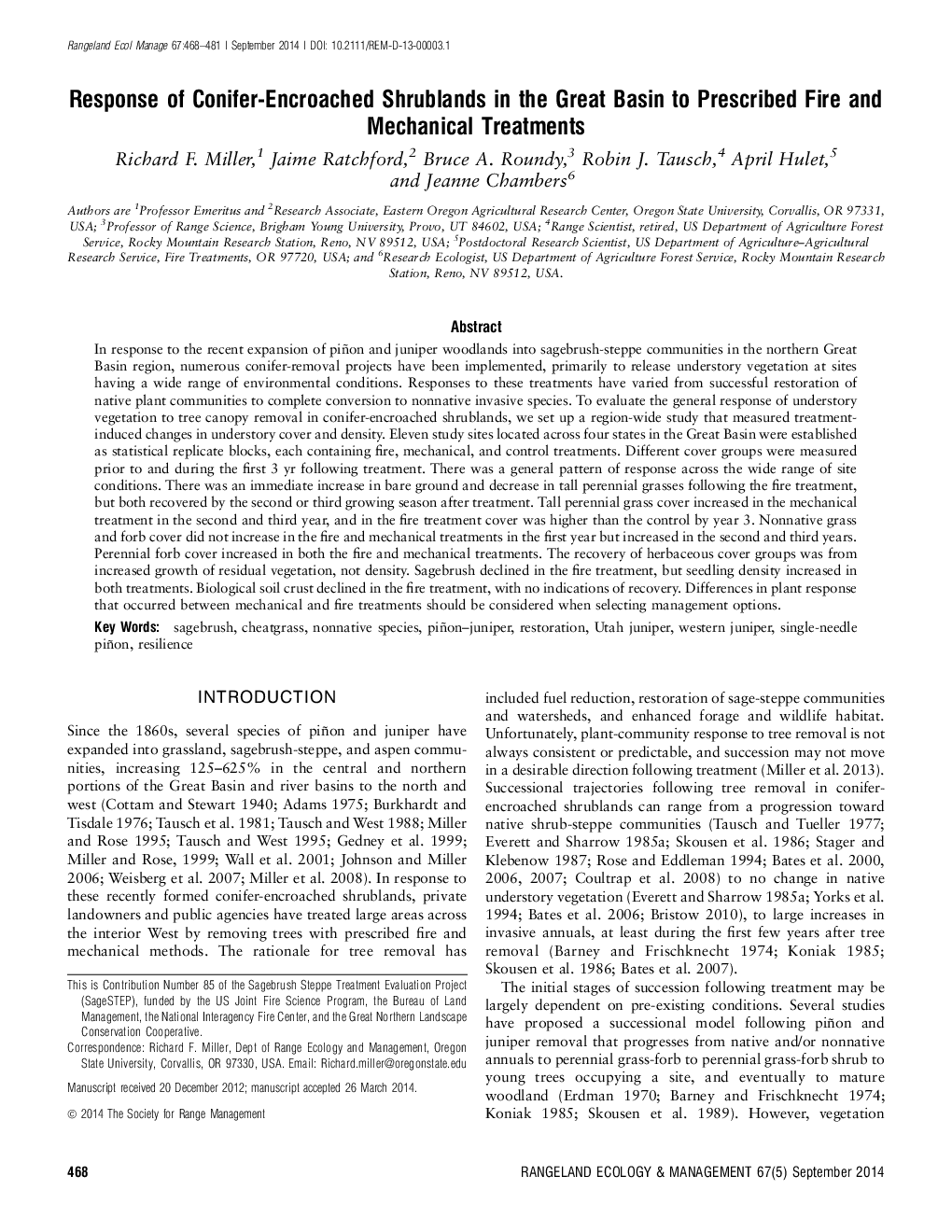| کد مقاله | کد نشریه | سال انتشار | مقاله انگلیسی | نسخه تمام متن |
|---|---|---|---|---|
| 4404402 | 1307161 | 2014 | 14 صفحه PDF | دانلود رایگان |
In response to the recent expansion of piñon and juniper woodlands into sagebrush-steppe communities in the northern Great Basin region, numerous conifer-removal projects have been implemented, primarily to release understory vegetation at sites having a wide range of environmental conditions. Responses to these treatments have varied from successful restoration of native plant communities to complete conversion to nonnative invasive species. To evaluate the general response of understory vegetation to tree canopy removal in conifer-encroached shrublands, we set up a region-wide study that measured treatment-induced changes in understory cover and density. Eleven study sites located across four states in the Great Basin were established as statistical replicate blocks, each containing fire, mechanical, and control treatments. Different cover groups were measured prior to and during the first 3 yr following treatment. There was a general pattern of response across the wide range of site conditions. There was an immediate increase in bare ground and decrease in tall perennial grasses following the fire treatment, but both recovered by the second or third growing season after treatment. Tall perennial grass cover increased in the mechanical treatment in the second and third year, and in the fire treatment cover was higher than the control by year 3. Nonnative grass and forb cover did not increase in the fire and mechanical treatments in the first year but increased in the second and third years. Perennial forb cover increased in both the fire and mechanical treatments. The recovery of herbaceous cover groups was from increased growth of residual vegetation, not density. Sagebrush declined in the fire treatment, but seedling density increased in both treatments. Biological soil crust declined in the fire treatment, with no indications of recovery. Differences in plant response that occurred between mechanical and fire treatments should be considered when selecting management options.
Journal: Rangeland Ecology & Management - Volume 67, Issue 5, September 2014, Pages 468–481
